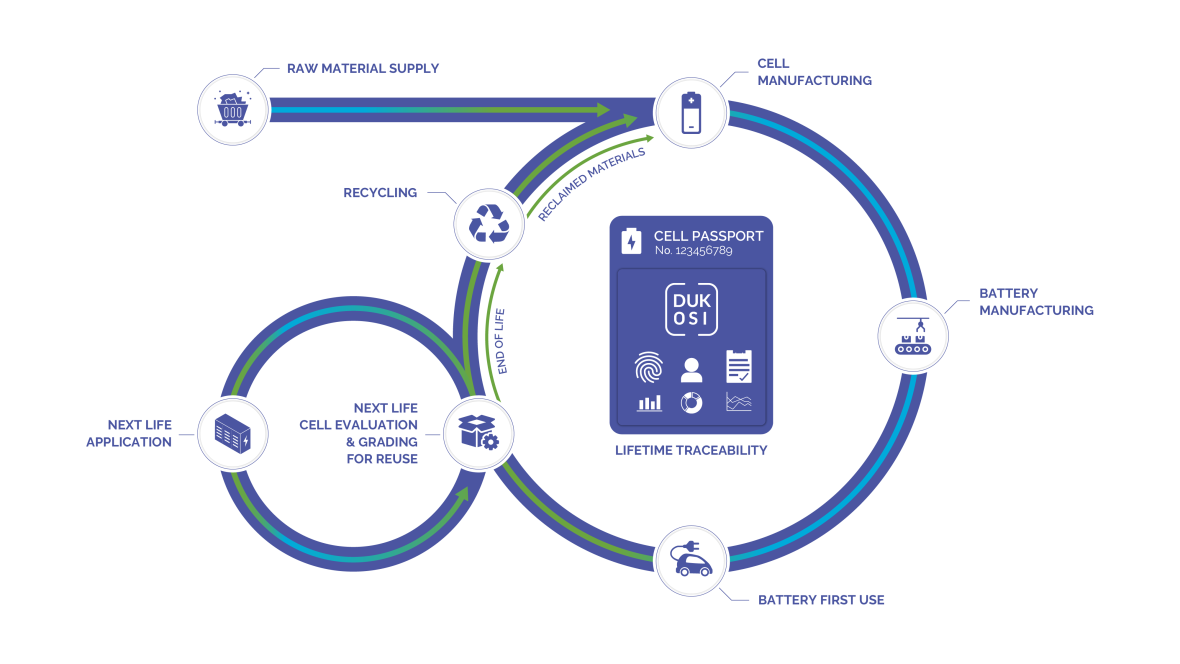Reducing the Barriers to Second Life Battery Cell Use, Promoting a Sustainable Future for Electric Vehicles
Batteries powering electric vehicles (xEV)1 will typically last several years, but ultimately, they have a finite lifespan and will eventually reach a point where their characteristics deteriorate beyond the point of acceptable performance for a vehicle. However, not every cell degrades at the same rate and many are likely still usable. The challenge with the way batteries are made today it’s difficult to determine the status of each cell, and which are still good to be reused in other applications like battery energy storage systems (BESS)2.
Transitioning toward a circular economy model aims to minimize the environmental impact of acquiring raw resources by advocating the recovery, reuse, and recycling of products and their materials. As with most products, an EV battery is more sustainable the longer it can be used. Reuse and recycling of battery cells have received particular attention in recent years due to the increasing proliferation of electric vehicles.

The cell passport powered by the Dukosi Cell Monitoring System (DCKMS™) enables a circular economy
A panel of battery experts at the 2023 Battery Show North America3 highlighted the current struggles for reusing and recycling xEV batteries, where second-life usage has traditionally faced “a lot of barriers”.
The good news is Dukosi’s chip-on-cell technology can reduce or even eliminate these barriers. Our solution provides unparalleled insights into each cell’s lifecycle and reduces the cost of testing to determine which cells are healthy, and therefore, how useful and safe they are to reuse4.
By installing a Dukosi Cell Monitor5 on each cell during manufacturing6, the cells are assigned a unique ID that assures the reliability of the supply chain, as both the cell’s serial number and the cell ID must match. This data traceability keeps track of the cell performance over its lifetime, and if the cell has been exposed to any abnormal conditions or potentially harmful events during shipping, storage, or use. When the cells reach the end of their first life, this data then allows the cells to be analyzed and graded for reuse7. The result is that our technology can significantly reduce the number of cells that go directly into recycling, which is still an energy-intensive process and should be the last resort when cells can no longer be used any other way.
As the number of xEVs on the road will keep growing exponentially, considering how to manage a batteries’ end-of-life is essential to ensure electric cars are as sustainable as can be.
- https://www.dukosi.com/electric-vehicles ↩︎
- https://www.dukosi.com/battery-energy-storage-systems ↩︎
- https://www.sae.org/news/2023/09/2023-battery-show-ev-battery-recycling ↩︎
- https://www.dukosi.com/sustainability ↩︎
- https://www.dukosi.com/dkcms-core ↩︎
- https://www.dukosi.com/cell-manufacturing ↩︎
- https://www.dukosi.com/blog/prioritizing-scalable-sustainable-strategies-to-achieve-net-zero-emissions-2050 ↩︎
All original content, graphics, images and media are copyright of Dukosi.